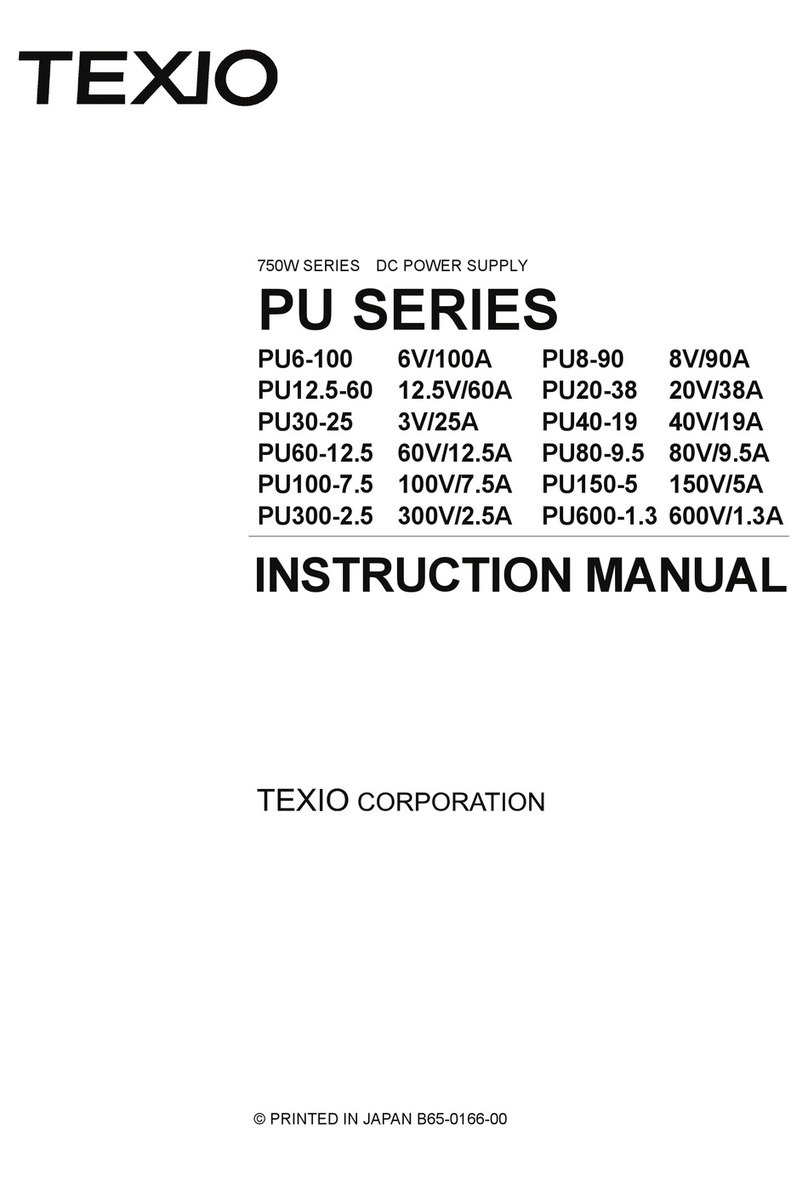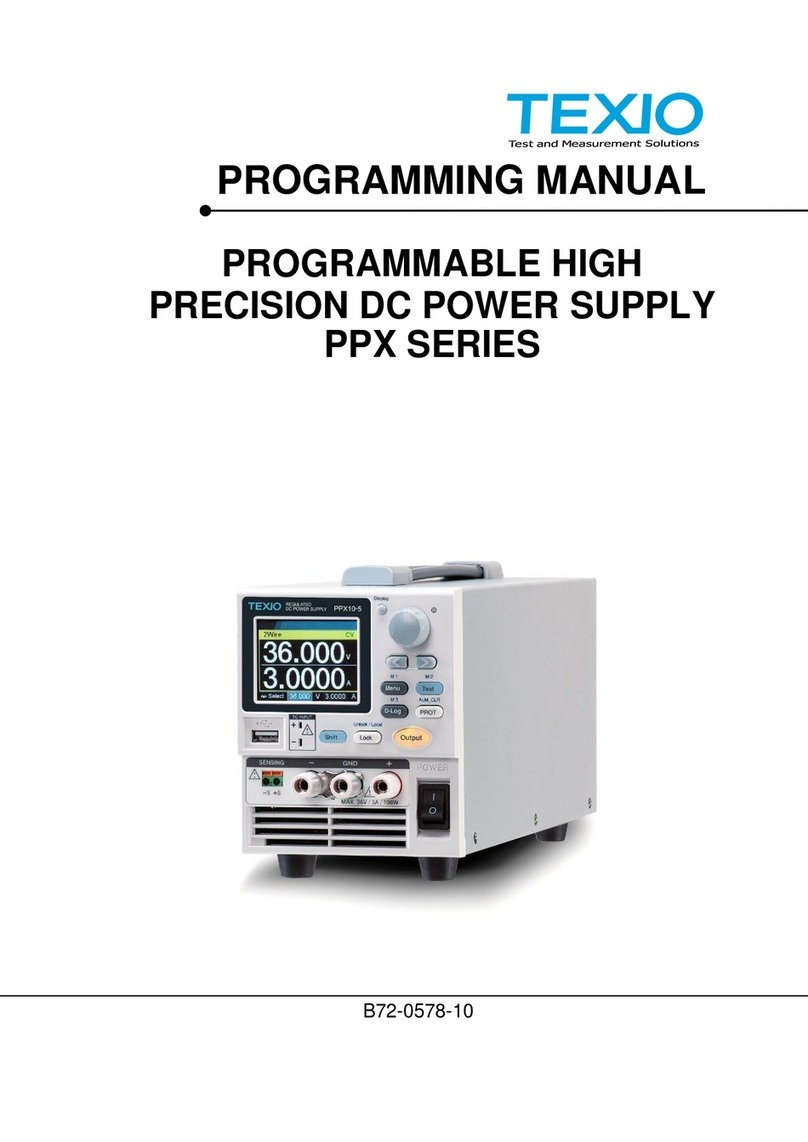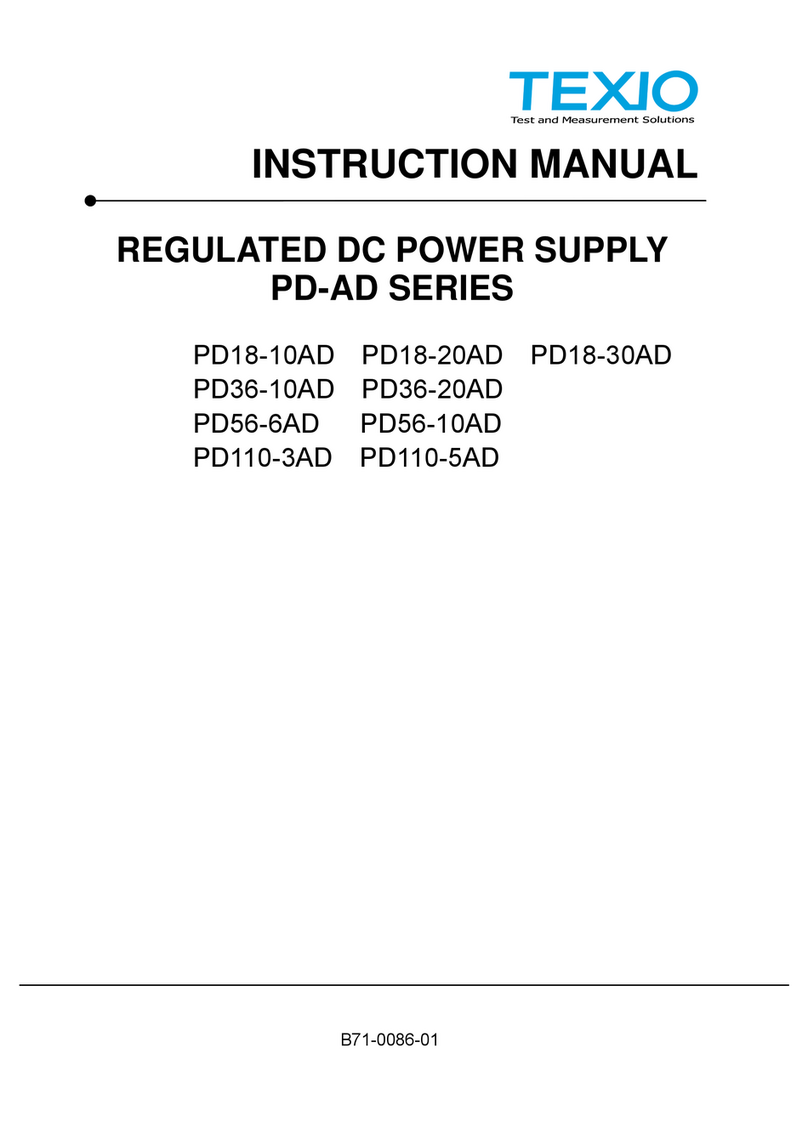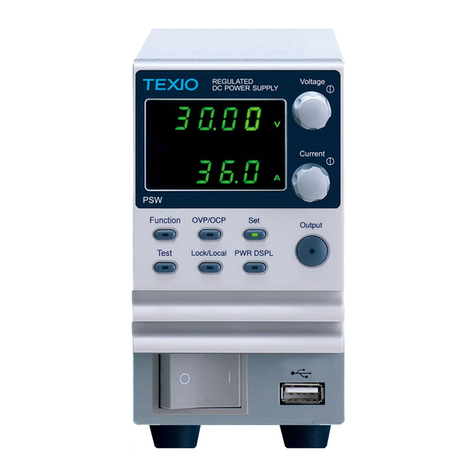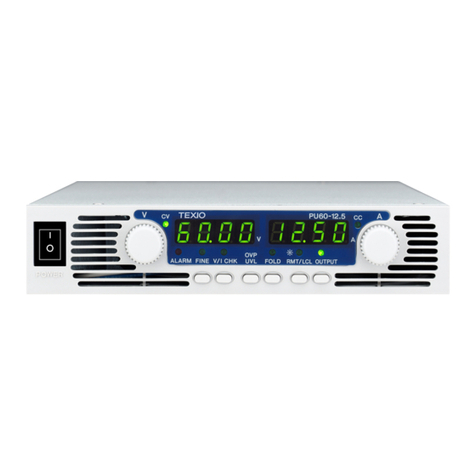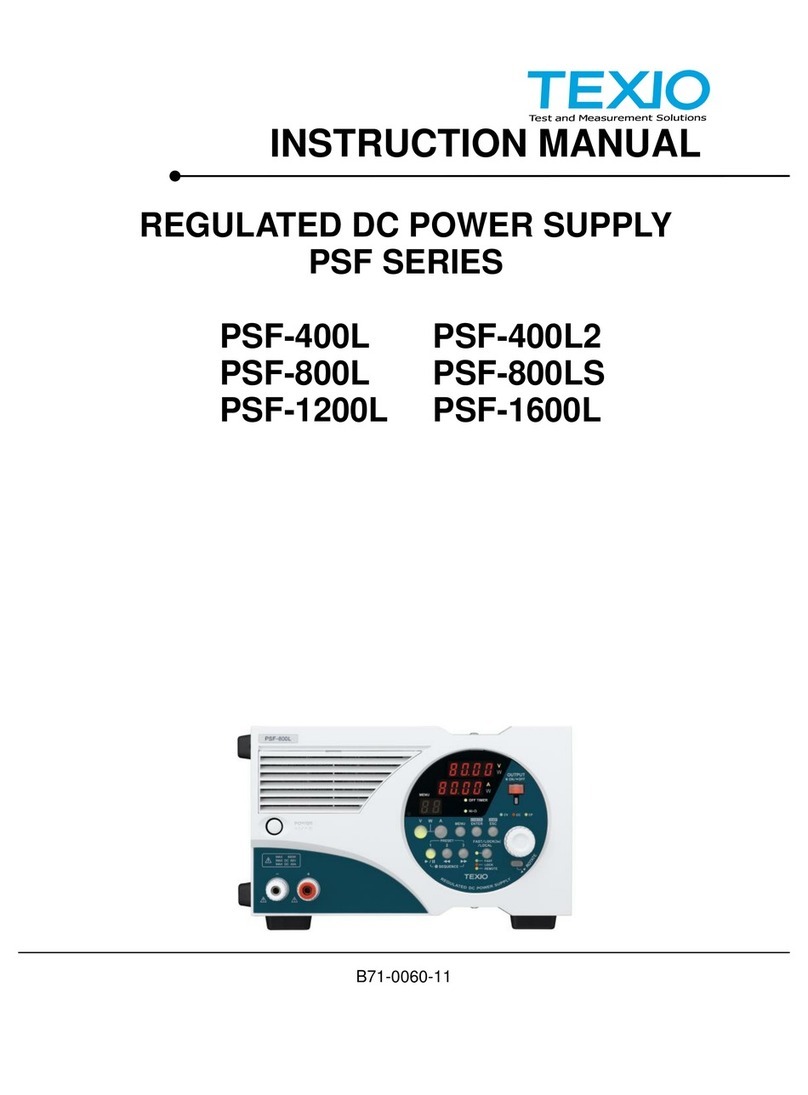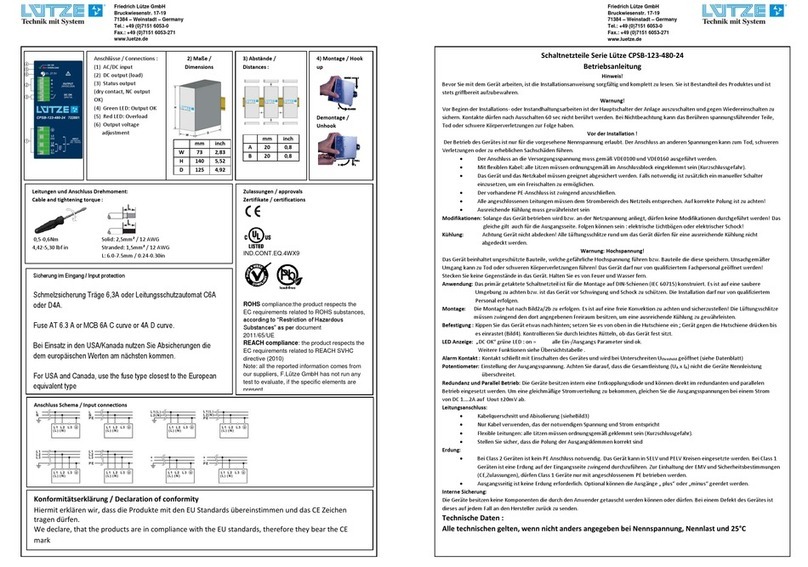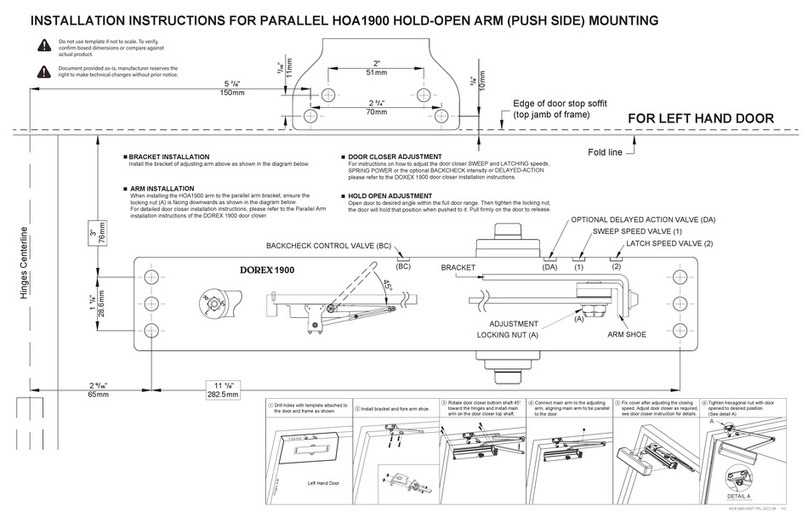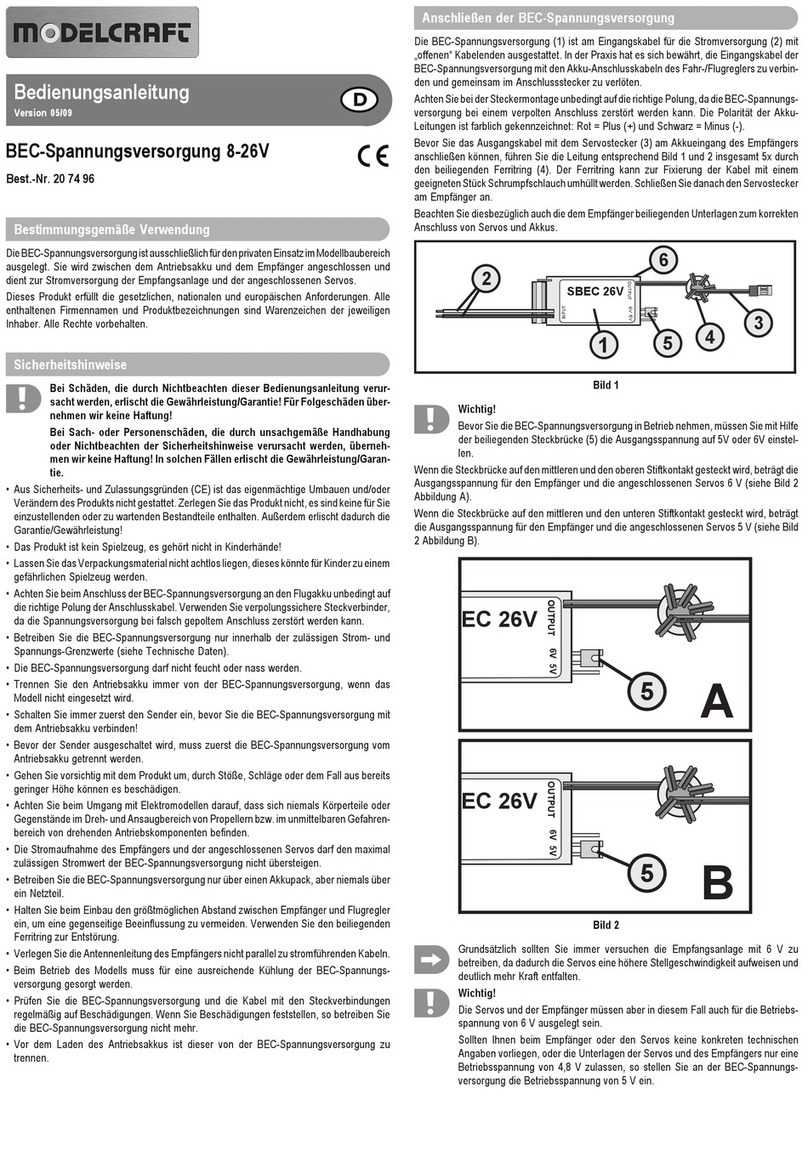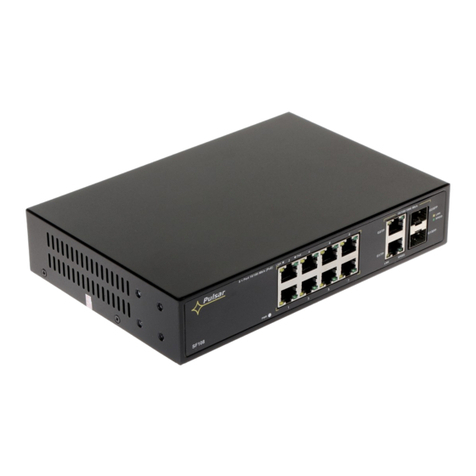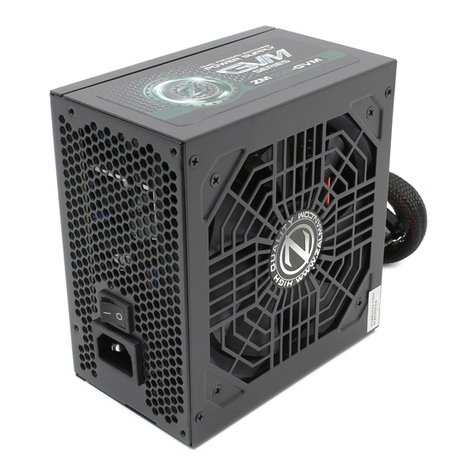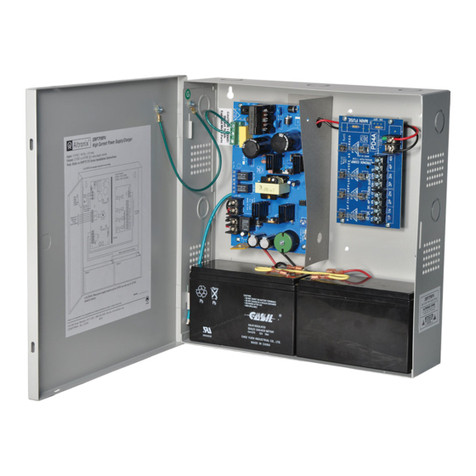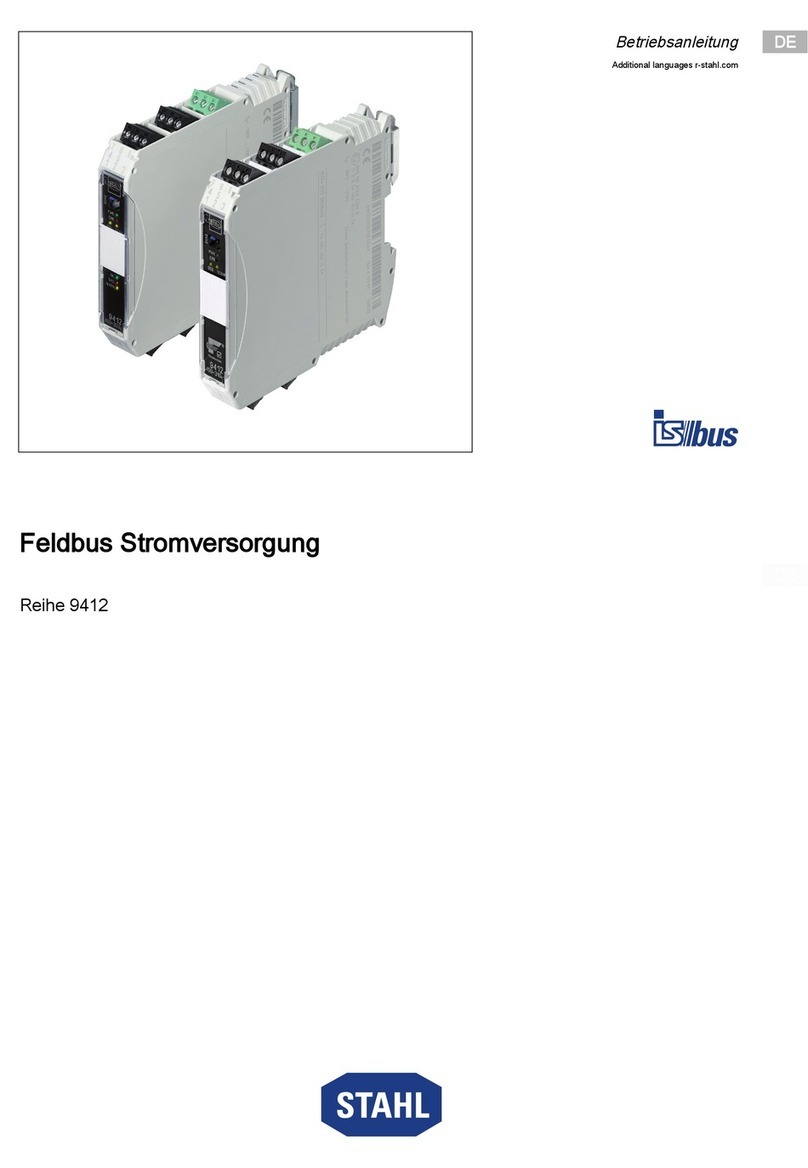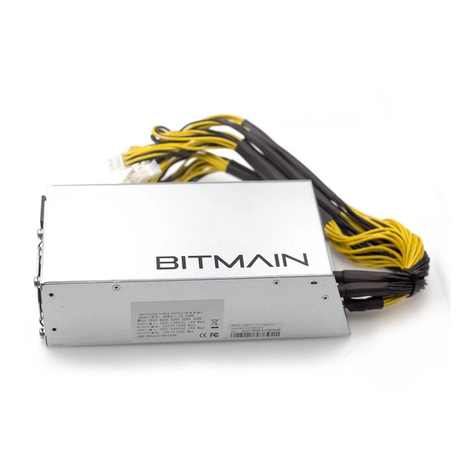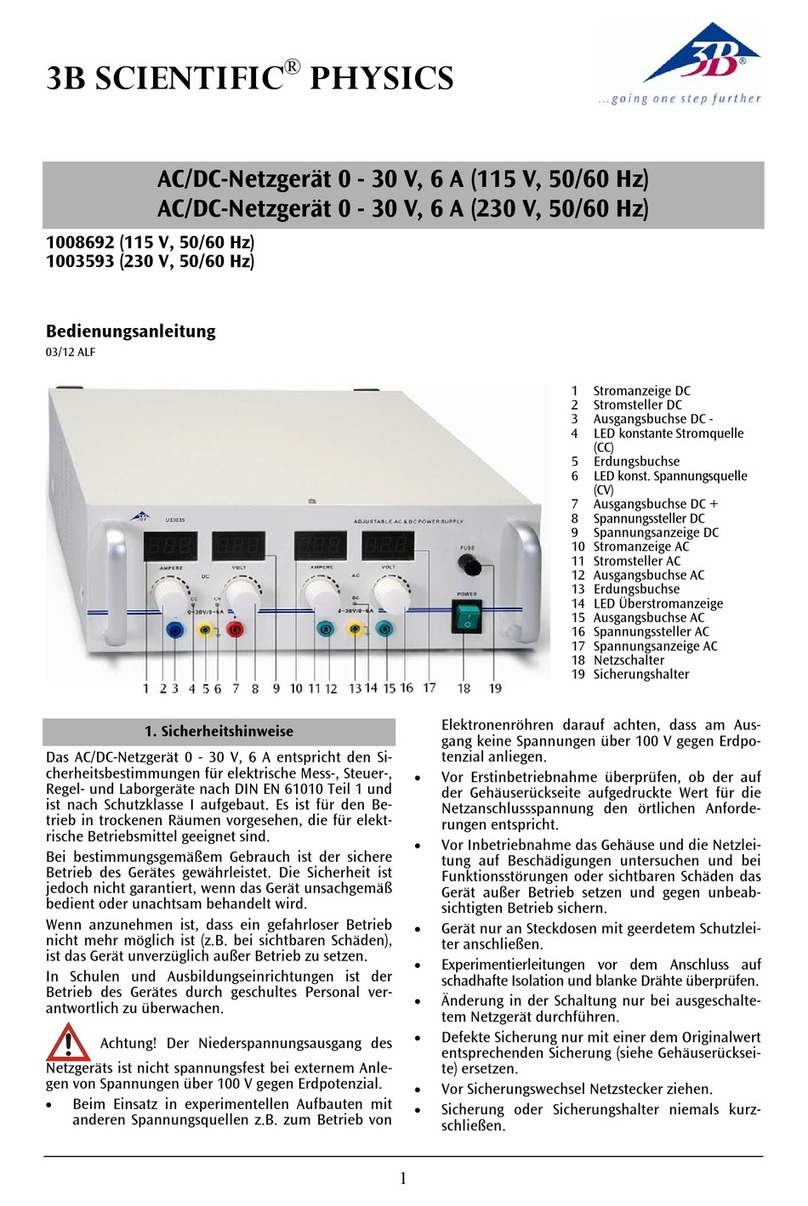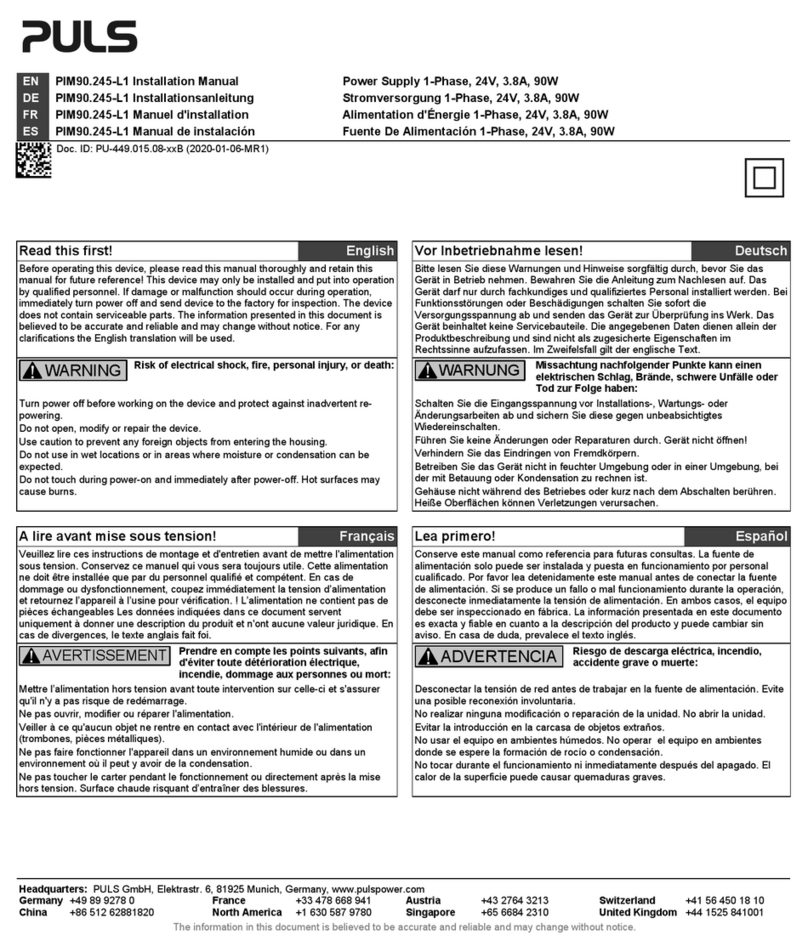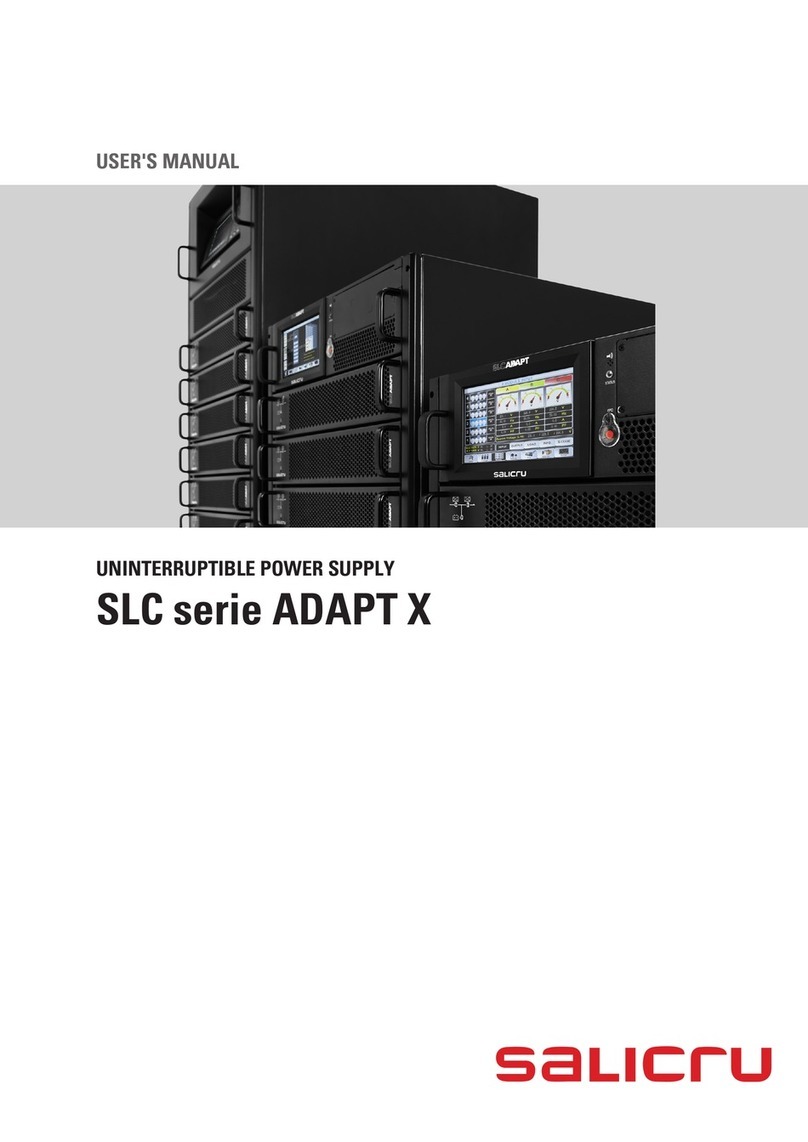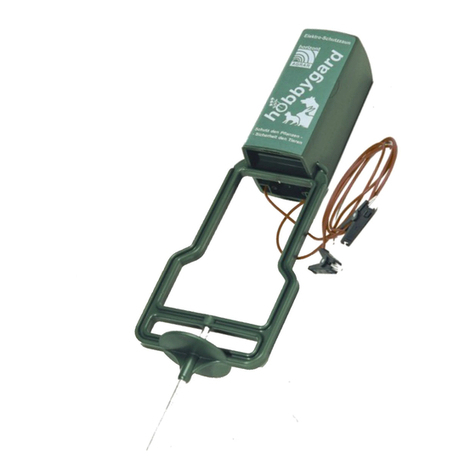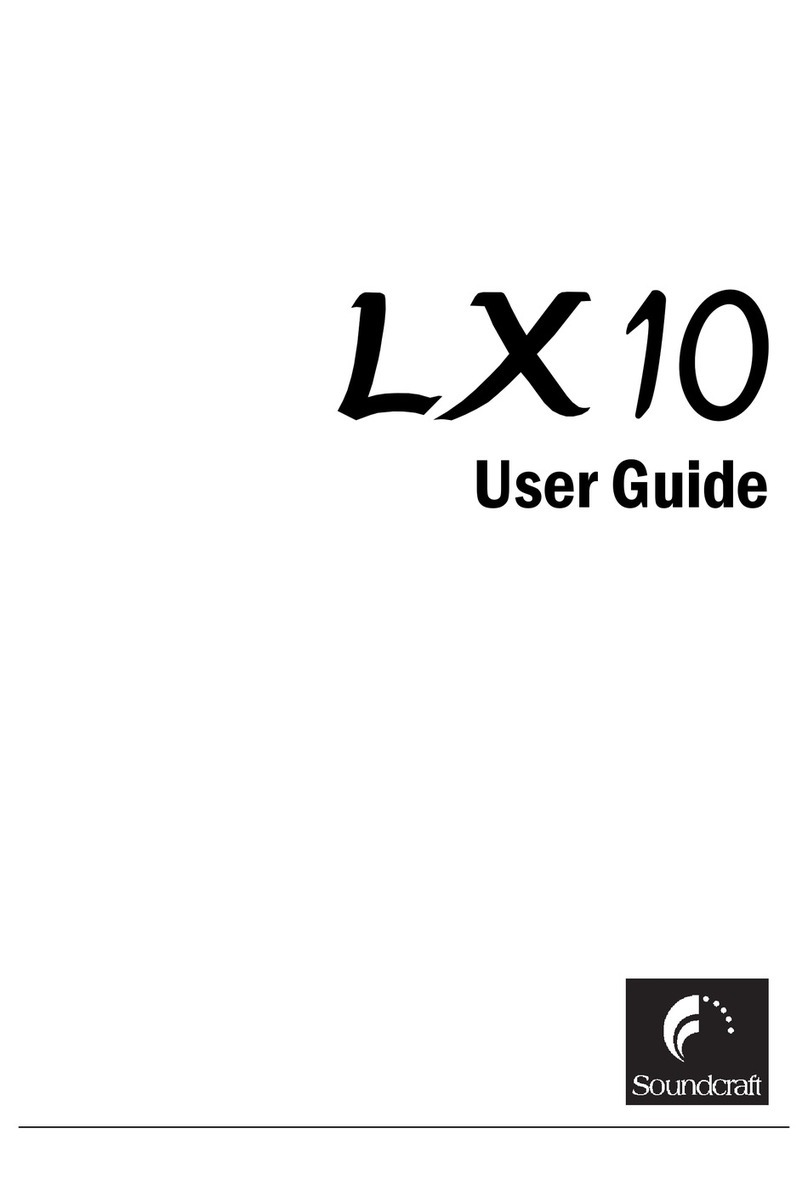TEXIO PSW Series Owner's manual

Front cover
PROGRAMMINGMANUAL
B71-0443-11
MULTI RANGE DC POWER SUPPLY
PSW SERIES

■ About a trademark, a registered trademark
A company name and the brand name mentioned in this instruction
manual are the trademark or the registered trademark of each
company or group in each country and region.
■ About this instruction manual
When copying the part or all of contents of this instruction manual,
seek the copyright holder.
In addition, the specifications of the product and the contents of this
instruction manual are subject to change without notice for
improvement. Please check to our website for the latest version.
■ About firmware version
This programming manual is required firmware version 1.70 or higher.

INDEX
Front cover .............................................................................1
1. Configuration Settings .......................................................1
1.1 Setting Configuration Settings ........................................1
2. REMOTE CONTROL.............................................................6
2.1 Interface Configuration ...................................................6
2.1.1 USB Remote Interface...........................................................6
2.1.2 Configure GP-IB Interface......................................................6
2.1.3 Configure Ethernet Connection..............................................7
2.1.4 Web Server Configuration......................................................8
2.1.5 Sockets Server Configuration................................................8
2.2 USB Remote Control Function Check..............................9
2.3 Web Server Remote Control Function Check.................10
2.4 Socket Server Function Check......................................10
2.5 Socket Server Examples...............................................14
2.5.1 Examples of VBA for EXCEL...............................................14
2.5.2 C++ Example .......................................................................15
3. Command Syntax ..............................................................16
4. Command List...................................................................18
4.1 Common Commands ....................................................18
4.1.1 *CLS.....................................................................................18
4.1.2 *ESE.....................................................................................18
4.1.3 *ESR ....................................................................................18
4.1.4 *IDN......................................................................................19
4.1.5 *OPC....................................................................................19
4.1.6 *RST.....................................................................................19
4.1.7 *SRE ....................................................................................20
4.1.8 *STB.....................................................................................20
4.1.9 *TRG....................................................................................20
4.1.10 *TST...................................................................................21
4.1.11 *WAI...................................................................................21
4.2 Abort Commands ..........................................................21
4.2.1 ABORt..................................................................................21
4.3 Apply Commands..........................................................22
4.3.1 APPLy..................................................................................22
4.4 Display Commands.......................................................23
4.4.1 DISPlay:MENU[:NAME].......................................................23
4.4.2 DISPlay[:WINDow]:TEXT:CLEar .........................................23
4.4.3 DISPlay[:WINDow]:TEXT[:DATA]........................................23
4.4.4 DISPlay:BLINk .....................................................................24
4.5 Initiate Commands........................................................24

4.5.1 INITiate[:IMMediate]:NAME.................................................24
4.6 Measure Commands.....................................................25
4.6.1 MEASure[:SCALar]:CURRent[:DC] .....................................25
4.6.2 MEASure[:SCALar]:VOLTage[:DC] .....................................25
4.6.3 MEASure[:SCALar]:POWer[:DC].........................................25
4.7 Output Commands........................................................25
4.7.1 OUTPut:DELay:ON..............................................................25
4.7.2 OUTPut:DELay:OFF............................................................26
4.7.3 OUTPut:MODE ....................................................................26
4.7.4 OUTPut[:STATe][:IMMediate]..............................................27
4.7.5 OUTPut[:STATe]:TRIGgered...............................................27
4.7.6 OUTPut:PROTection:CLEar................................................28
4.7.7 OUTPut:PROTection:TRIPped............................................28
4.8 Sense Commands ........................................................28
4.8.1 SENSe:AVERage:COUNt....................................................28
4.9 Status Commands ........................................................29
4.9.1 STATus:OPERation[:EVENt]...............................................29
4.9.2 STATus:OPERation:CONDition...........................................29
4.9.3 STATus:OPERation:ENABle ...............................................29
4.9.4 STATus:OPERation:PTRansition ........................................29
4.9.5 STATus:OPERation:NTRansition........................................30
4.9.6 STATus:QUEStionable[:EVENt] ..........................................30
4.9.7 STATus:QUEStionable:CONDition......................................30
4.9.8 STATus:QUEStionable:ENABle...........................................31
4.9.9 STATus:QUEStionable:PTRansition ...................................31
4.9.10 STATus:QUEStionable:NTRansition .................................31
4.9.11 STATus:PRESet ................................................................32
4.10 Source Commands .....................................................32
4.10.1 [SOURce:]CURRent[:LEVel][:IMMediate][:AMPLitude].....32
4.10.2 [SOURce:]CURRent[:LEVel]:TRIGgered[:AMPLitude]......33
4.10.3 [SOURce:]CURRent:PROTection[:LEVel].........................34
4.10.4 [SOURce:]CURRent:PROTection:STATe .........................34
4.10.5 [SOURce:]CURRent:SLEW:RISing ...................................35
4.10.6 [SOURce:]CURRent:SLEW:FALLing.................................36
4.10.7 [SOURce:]RESistance[:LEVel][:IMMediate][:AMPLitude]..37
4.10.8 [SOURce:]VOLTage[:LEVel][:IMMediate][:AMPLitude].....38
4.10.9 [SOURce:]VOLTage[:LEVel]:TRIGgered[:AMPLitude]......38
4.10.10 [SOURce:]VOLTage:PROTection[:LEVel].......................39
4.10.11 [SOURce:]VOLTage:SLEW:RISing .................................39
4.10.12 [SOURce:]VOLTage:SLEW:FALLing...............................40
4.11 System control setting Commands ..............................41
4.11.1 SYSTem:BEEPer[:IMMediate]...........................................41
4.11.2 SYSTem:CONFigure:BEEPer[:STATe].............................41

4.11.3 SYSTem:CONFigure:BLEeder[:STATe]............................42
4.11.4 SYSTem:CONFigure:BTRip[:IMMediate] ..........................42
4.11.5 SYSTem:CONFigure:BTRip:PROTection..........................42
4.11.6 SYSTem:CONFigure:CURRent:CONTrol..........................43
4.11.7 SYSTem:CONFigure:VOLTage:CONTrol..........................43
4.11.8 SYSTem:CONFigure:MSLave...........................................44
4.11.9 SYSTem:CONFigure:OUTPut:EXTernal[:MODE] .............44
4.11.10 SYSTem:CONFigure:OUTPut:PON[:STATe]..................45
4.12 Communication system configuration Commands ........45
4.12.1 SYSTem:COMMunicate:ENABle.......................................45
4.12.2 SYSTem:COMMunicate:GPIB[:SELF]:ADDRess..............46
4.12.3 SYSTem:COMMunicate:LAN:IPADdress ..........................46
4.12.4 SYSTem:COMMunicate:LAN:GATEway...........................46
4.12.5 SYSTem:COMMunicate:LAN:SMASk ...............................47
4.12.6 SYSTem:COMMunicate:LAN:MAC ...................................47
4.12.7 SYSTem:COMMunicate:LAN:DHCP .................................47
4.12.8 SYSTem:COMMunicate:LAN:DNS....................................48
4.12.9 SYSTem:COMMunicate:LAN:HOSTname ........................48
4.12.10 SYSTem:COMMunicate:LAN:WEB:PACTive..................49
4.12.11 SYSTem:COMMunicate:LAN:WEB:PASSword...............49
4.12.12 SYSTem:COMMunicate:USB:FRONt:STATe..................49
4.12.13 SYSTem:COMMunicate:USB:REAR:STATe...................50
4.12.14 SYSTem:COMMunicate:USB:REAR:MODE...................50
4.13 System Settings Commands .......................................51
4.13.1 SYSTem:ERRor.................................................................51
4.13.2 SYSTem:KEYLock:MODE.................................................51
4.13.3 SYSTem:KLOCk................................................................51
4.13.4 SYSTem:INFormation........................................................52
4.13.5 SYSTem:PRESet...............................................................52
4.13.6 SYSTem:VERSion.............................................................52
4.14 Trigger Commands .....................................................53
4.14.1 TRIGger:TRANsient[:IMMediate].......................................53
4.14.2 TRIGger:TRANsient:SOURce............................................53
4.14.3 TRIGger:OUTPut[:IMMediate] ...........................................53
4.14.4 TRIGger:OUTPut:SOURce................................................54
4.14.5 Trigger Commands Examples ...........................................54
5. Status Register Overview .................................................56
5.1 Introduction to the status register..................................56
5.2 Configuration status register .........................................57
5.3 Questionable Status Register Group .............................58
5.4 Operation Status Register Group ..................................60
5.5 Standard Event Status Register Group ..........................62
5.6 Status register group ....................................................64

5.7 Error code ....................................................................66
6. Appendix ...........................................................................67
6.1 PSW Default Settings ...................................................67
6.2 Error Messages & Messages ........................................69

1
1. Configuration Settings
1.1 Setting Configuration Settings
Background
The normal configuration settings (F-01~F-61, F-88,
F-89) are used to configure or view system settings.
Use the following operation steps when configuring the
interface settings used in the Remote Control chapter.
Ensure the load is not connected.
Ensure the output is off.
Note
Configuration settings F-90~F-95 cannot be edited in
the Normal Function Settings. See the user manual for
details.
The F-89 settings can only be viewed, not set.
Steps.
1.
Press the Function key. The function key
will light up.
Function
2.
The display will show F-01 on the
top and the configuration setting for
F-01 on the bottom.
3.
Rotate the voltage knob to change the F
setting.
Range F-00~ F-61, F-88, F-89
Voltage
4.
Use the current knob to set the parameter
for the chosen F setting.
Current
5.
Press the Voltage knob
to save the
configuration setting.
Conf will be displayed
when successful.
Voltage
Exit
Press the Function key again to exit the
configuration settings.
The function key light will turn off.
Function

2
Configuration Table
Please use the configuration settings listed below when applying the
configuration settings.
Normal Function
Settings
Setting
Setting Range
Output ON delay time
F-01
0.00s~99.99s
Output OFF delay time
F-02
0.00s~99.99s
V-I mode slew rate select
F-03
0 = CV high speed priority
1 = CC high speed priority
2 = CV slew rate priority
3 = CC slew rate priority
Rising voltage slew rate
F-04
0.01V/s~60.00V/s (PSW -XX L30)
0.1V/s~160.0V/s (PSW -XX L80)
0.1V/s~320.0V/s (PSW-XX M160)
0.1V/s~500.0V/s (PSW-XXM250)
1V/s~1600V/s (PSW-XXH800)
Falling voltage slew rate
F-05
0.01V/s~60.00V/s (PSW -XX L30)
0.1V/s~160.0V/s (PSW -XX L80)
0.1V/s~320.0V/s (PSW-XX M160)
0.1V/s~500.0V/s (PSW-XXM250)
1V/s~1600V/s (PSW-XXH800)
Rising current slew rate
F-06
0.01A/s~72.00A/s (PSW-360L30)
0.1A/s~144.0A/s (PSW-720L30)
0.1A/s~216.0A/s (PSW-1080L30)
0.01A/s~27.00A/s (PSW-360L80)
0.01A/s~54.00A/s (PSW-720L80)
0.01A/s~81.00A/s (PSW-1080L80)
0.01A/s~14.40A/s (PSW-360M160)
0.01A/s~28.80A/s (PSW-720M160)
0.01A/s~43.20A/s (PSW-1080M160)
0.001A/s~9.000A/s (PSW-360M250)
0.01A/s~18.00A/s (PSW-720M250)
0.01A/s~27.00A/s (PSW-1080M250)
0.001A/s~2.880A/s (PSW-360H800)
0.001A/s~5.760A/s (PSW-720H800)
0.001A/s~8.640A/s (PSW-1080H800)

3
Falling current slew rate
F-07
0.01A/s~72.00A/s (PSW-360L30)
0.1A/s~144.0A/s (PSW-720L30)
0.1A/s~216.0A/s (PSW-1080L30)
0.01A/s~27.00A/s (PSW-360L80)
0.01A/s~54.00A/s (PSW-720L80)
0.01A/s~81.00A/s (PSW-1080L80)
0.01A/s~14.40A/s (PSW-360M160)
0.01A/s~28.80A/s (PSW-720M160)
0.01A/s~43.20A/s (PSW-1080M160)
0.001A/s~9.000A/s (PSW-360M250)
0.01A/s~18.00A/s (PSW-720M250)
0.01A/s~27.00A/s (PSW-1080M250)
0.001A/s~2.880A/s (PSW-360H800)
0.001A/s~5.760A/s (PSW-720H800)
0.001A/s~8.640A/s (PSW-1080H800)
Internal resistance
setting
F-08
0.000Ω~0.833Ω (PSW-360L30)
0.000Ω~0.417Ω (PSW-720L30)
0.000Ω~0.278Ω (PSW-1080L30)
0.000Ω~5.926Ω (PSW-360L80)
0.000Ω~2.963Ω (PSW-720L80)
0.000Ω~1.975Ω (PSW-1080L80)
0.000Ω~22.222Ω (PSW-360M160)
0.000Ω~11.111Ω (PSW-720M160)
0.000Ω~7.407Ω (PSW-1080M160)
0.00Ω ~ 55.55Ω (PSW-360M250)
0.00Ω ~ 27.77Ω (PSW-720M250)
0.00Ω ~ 18.51Ω (PSW-1080M250)
0.0Ω ~ 555.5Ω (PSW-360H800)
0.0Ω ~ 277.8Ω (PSW-720H800)
0.0Ω ~ 185.1Ω (PSW-1080H800)
Bleeder circuit control
F-09
0 = OFF, 1 = ON, 2 = AUTO
Buzzer ON/OFF control
F-10
0 = OFF, 1 = ON
Measurement Average
Setting
F-17
0 = Low, 1 = Middle, 2 = High
Lock Mode
F-19
0 = Panel lock: allow output off
1 = Panel lock: allow output on/off
USB/GPIB settings
Front panel USB State *
F-20
0 = Absent, 1 = Mass Storage
Rear panel USB State *
F-21
0 = Absent, 2 = USB-CDC,
3 = GPIB-USB adapter
Rear panel USB mode *
F-22
0 = Disable, 1 = GPIB-USB adapter,
2 = USB CDC,
3 = USB CDC(Full speed)
GPIB address
F-23
0~30
LAN settings
MAC Address-1 *
F-30
0x00~0xFF

4
MAC Address-2 *
F-31
0x00~0xFF
MAC Address-3 *
F-32
0x00~0xFF
MAC Address-4 *
F-33
0x00~0xFF
MAC Address-5 *
F-34
0x00~0xFF
MAC Address-6 *
F-35
0x00~0xFF
LAN
F-36
0 = Disable, 1 = Enable
DHCP
F-37
0 = Disable, 1 = Enable
IPAddress-1
F-39
0~255
IPAddress-2
F-40
0~255
IPAddress-3
F-41
0~255
IPAddress-4
F-42
0~255
Subnet Mask-1
F-43
0~255
Subnet Mask-2
F-44
0~255
Subnet Mask-3
F-45
0~255
Subnet Mask-4
F-46
0~255
Gateway-1
F-47
0~255
Gateway-2
F-48
0~255
Gateway-3
F-49
0~255
Gateway-4
F-50
0~255
DNS address -1
F-51
0~255
DNS address -2
F-52
0~255
DNS address -3
F-53
0~255
DNS address -4
F-54
0~255
Sockets active
F-57
0 = Disable, 1 = Enable
Web Server active
F-59
0 = Disable, 1 = Enable
Web password active
F-60
0 = Disable, 1 = Enable
Web setting password
F-61
0000~9999
System Settings
Factory Set Value
F-88
0 = Disable
1 = Return to factory settings
Show Version
F-89
0, 1 = PSW version
2, 3 = PSW build year
4, 5 = PSW build month/day
6, 7 = Keyboard CPLD version
8, 9 = Analog-Control CPLD version
A, B = Reserved
C, D = Kernel build year
E, F = Kernel build month/day
G, H = Test command version
I, J = Test command build year
K, L = Test command build month/day

5
Power On Configuration Settings*
CV Control
F-90
0 = Panel control (local)
1 = External voltage control
2 = External resistance control
(Ext-R 10kΩ = Vo, max)
3 =External resistance control
(Ext-R10kΩ = 0)
CC Control
F-91
0 = Panel control (local)
1 = External voltage control
2 = External resistance control
(Ext-R 10kΩ = Io,max)
3 = External resistance control
(Ext-R10kΩ = 0)
Power-ON Output
F-92
0 = OFF at startup,1 = On at startup
t001 ~ t010 = run testscript t001 ~ t010
Master/Slave
F-93
0 = Master/Local
1 = Master/Parallel1
2 = Master/Parallel2
3 = Slave/Parallel
4 = Slave/Series(30V/80V/160V only)
External Out Logic
F-94
0 = High ON,
1 = Low ON
Power Switch trip
F-95
0 = Enable
1 = Disable
*Note
* Items marked with are for display only. They can not be
set at normal settings.
The Power On configuration settings can only be changed
during power up to prevent the configuration settings being
inadvertently changed.

6
2. REMOTE CONTROL
This chapter describes basic configuration of IEEE488.2 based remote
control.
2.1 Interface Configuration
2.1.1 USB Remote Interface
USB
configuration
PC side
connector
Type A, host
PSW side
connector
Rear panel Type B, slave
Speed
1.1/2.0 (full speed/high speed)
USB Class
CDC (communications device class)
Note
Before using the USB remote control, you will need to
install the USB device driver(inf file) that is included on
the CD accompanying accessories.
Panel
operation
1.
Connect the USB cable to the rear panel
USB B port.
2.
Press the Function key to enter the Normal
configuration settings.
Set the following USB settings:
F-22 = 2
Set the rear panel USB port to
USB-CDC.
F-22 = 3
Set the rear panel USB port to
USB-CDC (Full speed only)
2.1.2 Configure GP-IB Interface
To use GP-IB, the optional GP-IB to USB (GUG-001) adapter must be
used. The GP-IB to USB adapter must be connected before the PSW is
turned on. Only one GP-IB address can be used at a time.
Configure
GP-IB
1.
Ensure the PSW is off before proceeding.
2.
Connect the USB cable from the rear panel USB B port
on the PSW to the USB A port on the GP-IB to USB
adapter.

7
3.
Connect a GP-IB cable from a GP-IB controller to the
GP-IB port on the adapter.
Type B plug for
PSW series
Type A plug From
computer
GUG-001
4.
Turn the PSW on.
5.
Press the Function key to enter the Normal
configuration settings.
Set the following GP-IB settings:
F-22 = 1
Set the rear panel USB port to
GPIB-USB (GUG-001)
F-23 = 0~30
Set the GP-IB address (0~30/Default: 8)
GP-IB
constraints
Maximum 15 devices altogether, 20m cable length, 2m
between each device
Unique address assigned to each device
At least 2/3 of the devices turned On
No loop or parallel connection
2.1.3 Configure Ethernet Connection
The Ethernet interface can be configured for a number of different
applications. Ethernet can be configured for basic remote control or
monitoring using a web server or it can be configured as a socket server.
The PSW series supports both DHCP connections so the instrument can
be automatically connected to an existing network or alternatively, network
settings can be manually configured.
Ethernet
configuration
Parameters
MAC Address
(display only)
LAN
DHCP
IPAddress
Subnet Mask
Gateway
DNS Address
Sockets Active
Web Server Active
Web Password Active
Web set password
Port number : 2268(Fixed)
0000~9999(default 0000)

8
2.1.4 Web Server Configuration
Configuration
This configuration example will configure the PSW as a
web server and use DHCP to automatically assign an IP
address to the PSW.
1.Connect an Ethernet cable from the network
to the rear panel Ethernet port.
LAN
2. Press the Function key to enter the Normal
configuration settings.
Set the following LAN settings:
F-36 = 1
Enable LAN
F-37 = 1
Turn DHCP to enable
F-59 = 1
Turn the web server on
Note
It may be necessary to cycle the power or refresh the
web browser to connect to a network.
2.1.5 Sockets Server Configuration
Configuration
This configuration example will configure the PSW for
web sockets control.
The following configuration settings will manually assign
the PSW an IP address and enable web sockets. By
default, the socket port number is 2268 and cannot be
configured.
1. Connect an Ethernet cable from the network
to the rear panel Ethernet port.
LAN
2. Press the Function key to enter the Normal
configuration settings.
3. Set the following LAN settings:
F-36 = 1
Enable LAN
F-37 = 0
Disable DHCP
F-39 = 172
IPAddress part 1 of 4
F-40 = 16
IPAddress part 2 of 4
F-41 = 5
IPAddress part 3 of 4
F-42 = 133
IPAddress part 4 of 4
F-43 = 255
Subnet Mask part 1 of 4
F-44 = 255
Subnet Mask part 2 of 4
F-45 = 128
Subnet Mask part 3 of 4
F-46 = 0
Subnet Mask part 4 of 4
F-43 = 172
Gateway part 1 of 4
F-44 = 16
Gateway part 2 of 4
F-45 = 21
Gateway part 3 of 4

9
F-46 = 101
Gateway part 4 of 4
F-57 = 1
Enable Sockets
Note
The socket function is only available for firmware version
V1.12 or above. See the user manual to check your
firmware version number.
2.2 USB Remote Control Function Check
Functionality
check
Install a driver(TEXIO_CDC.inf) from Manual CD. The USB
device driver of psw is more downloadable than our
homepage .
When USB connects psw to a computer for the first time,
installation of the USB device driver is required.
Please perform the installation from the Device Manager if a
computer can’t recognize psw.
Control Panel –All Control Panel Items –Device Manager –
Other Device –PSW (Right click)
–Update driver Software
Please prepare the Terminal application(Such as PuTTY
or RealTerm). Serial communication settings are as
follows.
Baud rate
: 9600bps
Data length
: 8bit
Parity bit
: None
Stop bits
: 1bit
Flow control
: None
Run this query command via the terminal after the
instrument has been configured for USB remote control.
*idn?
This should return the Manufacturer, Model number,
Serial number, and Firmware version in the following
format.
TEXIO,xxxxxxxxxx,TW123456,01.00.20110101
Manufacturer :TEXIO
Model number :xxxxxxxxxxx
Serial number :TW123456
Firmware version :01.00.20110101
Termination character of commands and queries use the
^j(LF:Line Feed).

10
2.3 Web Server Remote Control Function Check
Functionality
check
Enter the IP address of the power supply in a web
browser after the instrument has been configured as a
web server
http:// XXX.XXX.XXX.XXX
The web browser interface appears.
2.4 Socket Server Function Check
Background
To test the socket server functionality, National
Instruments Measurement and Automation Explorer
can be used. This program is available on the NI
website, www.ni.com.
Requirements
PSW Firmware: V1.12
Operating System: Windows XP, 7, 8
Functionality
check
1. Start the NI Measurement and Automation Explorer
(NI-MAX) program. Using Windows, press:
Start ->All Programs ->National Instruments
->Measurement & Automation
Display and operated by a version of NI-MAX is
different.Please operate in accordance with the version
you are using.
2. From the Configuration panel access;
My System ->Devices and Interfaces
->Network Devices
3. Press Add New Network Device->Visa TCP/IP
Resource....

11
2
3
4. Select Manual Entry of Raw Socket from the popup
window.
4
5. Enter the IP address and the port number of the
PSW. The port number is fixed at 2268.
6. Double click the Validate button.
5
6

12
7. Next configure the Alias (name) of the PSW
connection. In this example the Alias is:PSW_DC1
8. Click finish.
7
8
9. The IP address of the PSW will now appear under
Network Devices in the configuration panel. Select this
icon now.
10. Press Open VISATest Panel.
9
10
11. Under the Template -> Property Node tabs, set
Termination Char Enable from theAttribute Name list to
VI_TRUE.

13
11
12. Under the Basic I/O ->Write tabs, Enter the *IDN?
query into the Buffer, if it is not already there.
13. Click the Execute button.
12
13
14. In the Basic I/O -> Read tabs, the return parameter
for the *IDN? query should be returned to the buffer
area:
TEXIO,PSWxxxx,xxxxxxxxxx,,T1.12.20111013
14
TEXIO,PSW-360L30,,1. 1220111013
Note
For further details, please see the following
programming examples.

14
2.5 Socket Server Examples
2.5.1 Examples of VBA for EXCEL
Background
The following visual basic programming example uses
the VISA COM 3.0 Type Library.
The example will connect to the PSW using the IP
address of 172.15.5.133 over port 2268. The program
will send the *IDN? to the PSW, print the return string and
then close the connection.
Other manuals for PSW Series
1
Table of contents
Other TEXIO Power Supply manuals
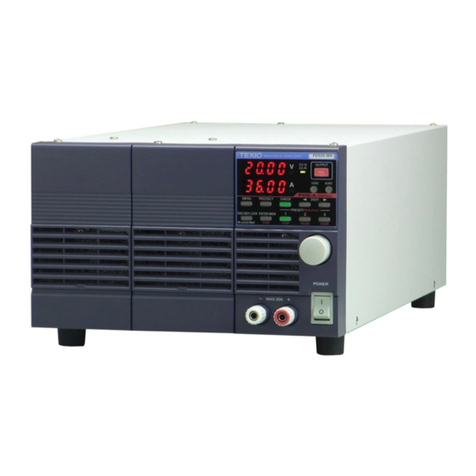
TEXIO
TEXIO PDS20-10A User manual
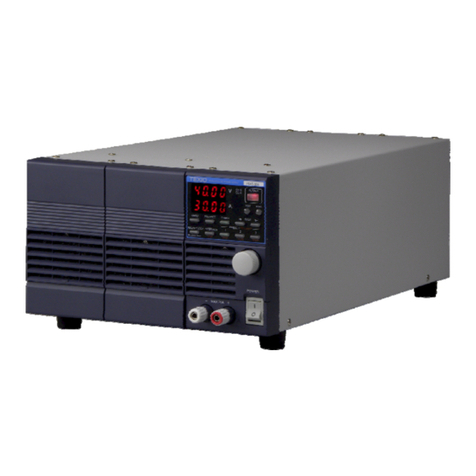
TEXIO
TEXIO PS-A Series User manual

TEXIO
TEXIO PSF-400H User manual

TEXIO
TEXIO PFR-100M250 Manual
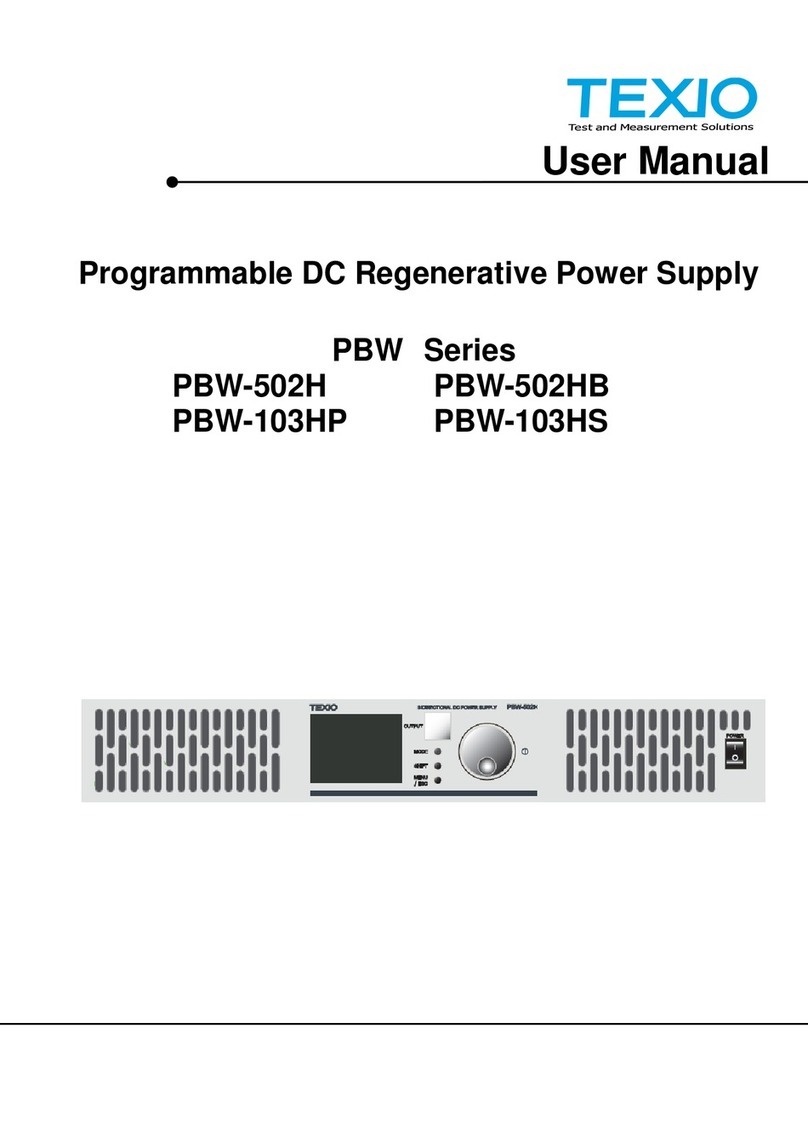
TEXIO
TEXIO PBW Series User manual
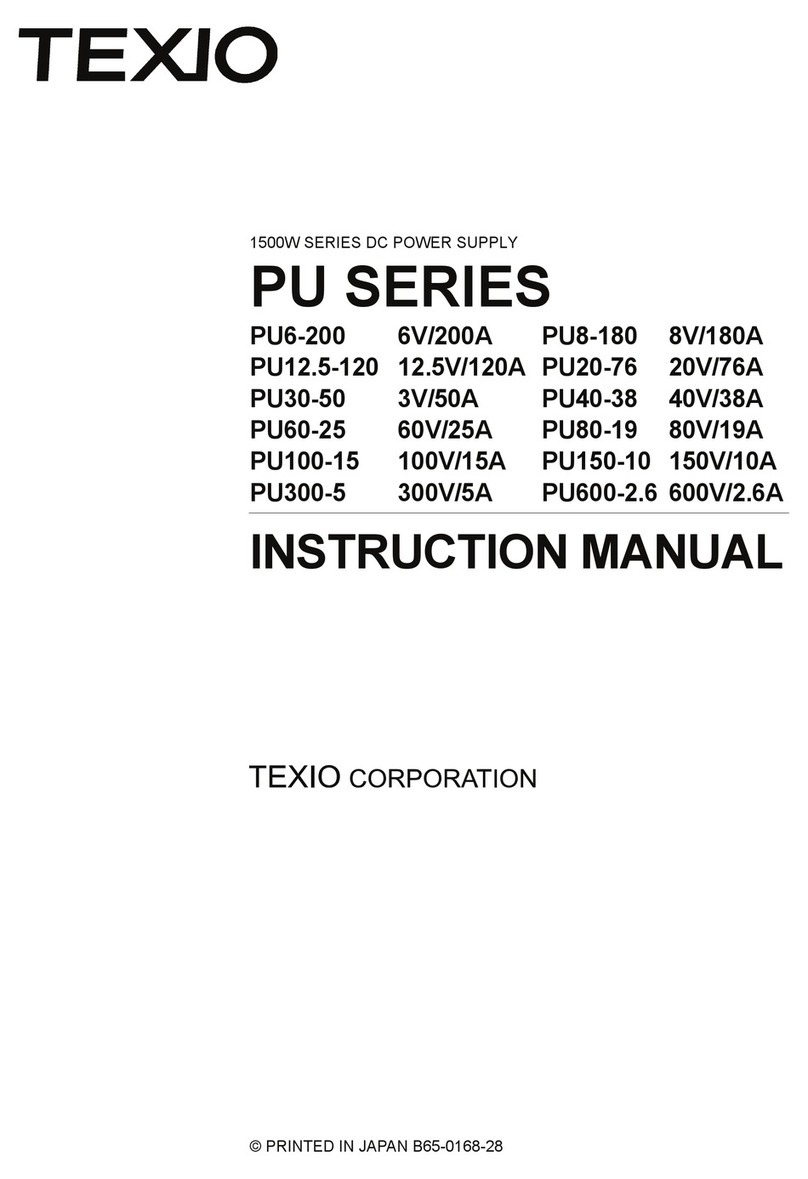
TEXIO
TEXIO PU6-200 User manual

TEXIO
TEXIO PU6-200 User manual
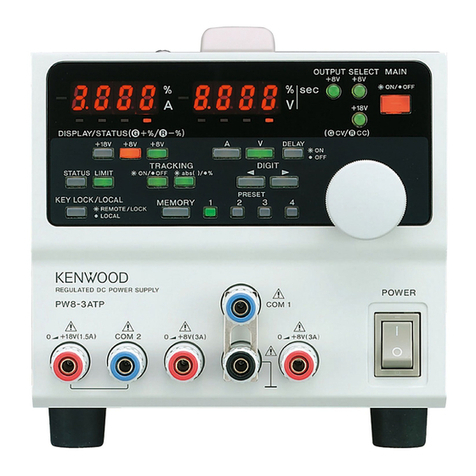
TEXIO
TEXIO PW8-3AQP User manual
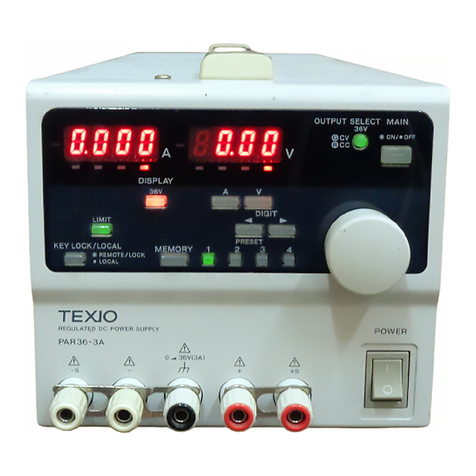
TEXIO
TEXIO PAR-A Series User manual
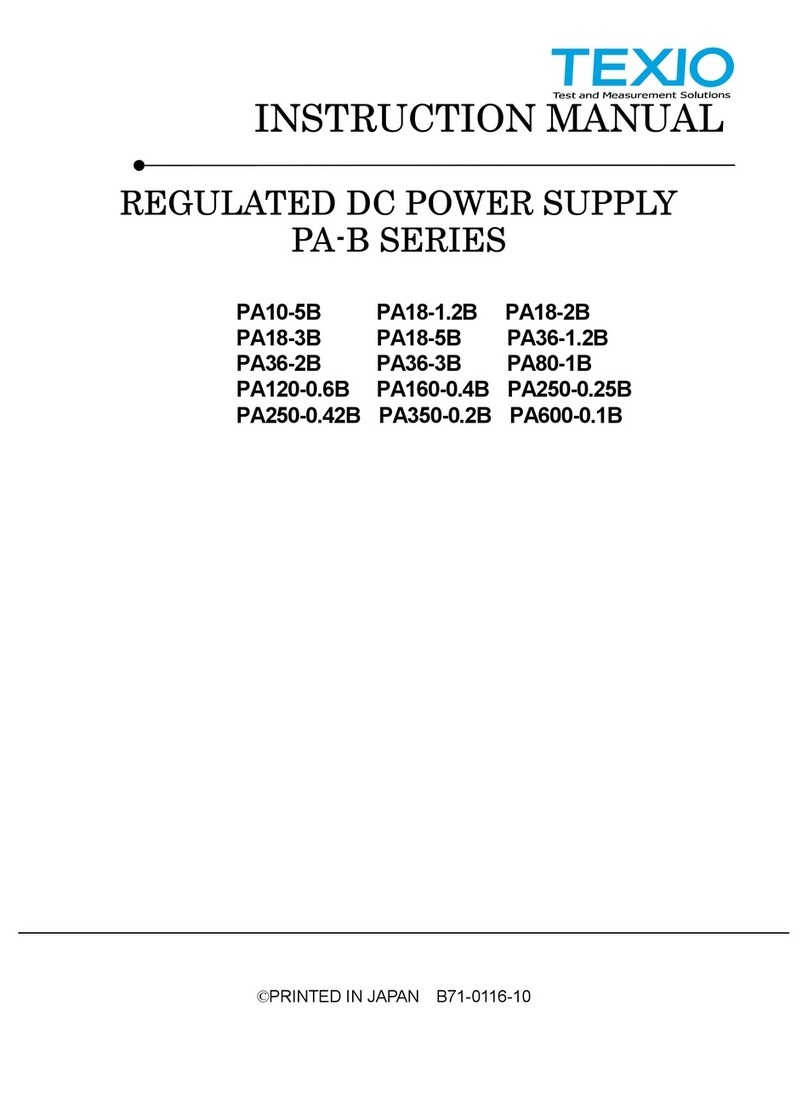
TEXIO
TEXIO PA10-5B User manual
